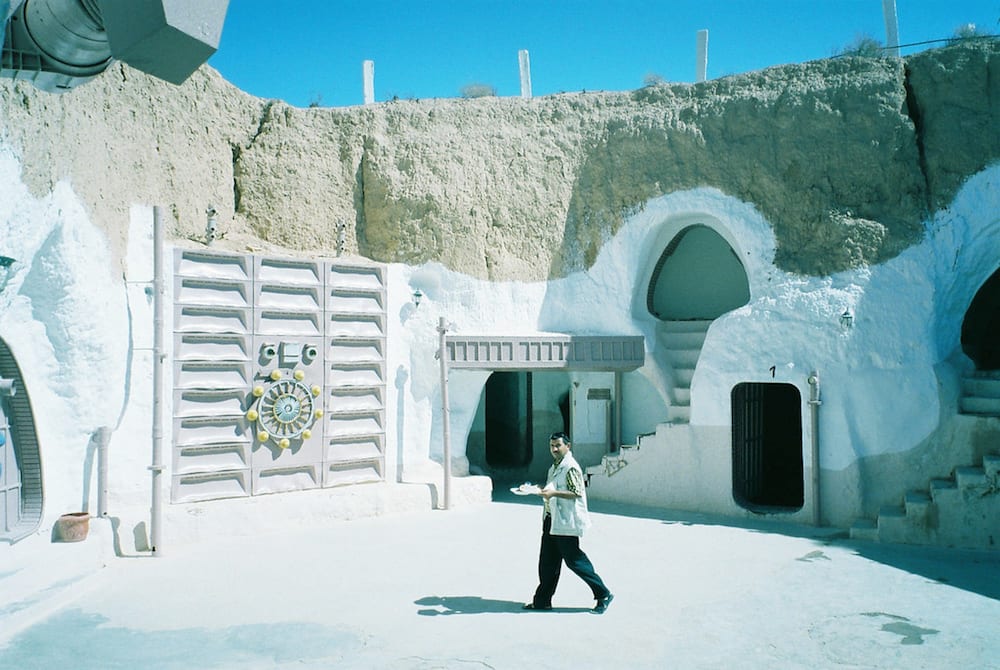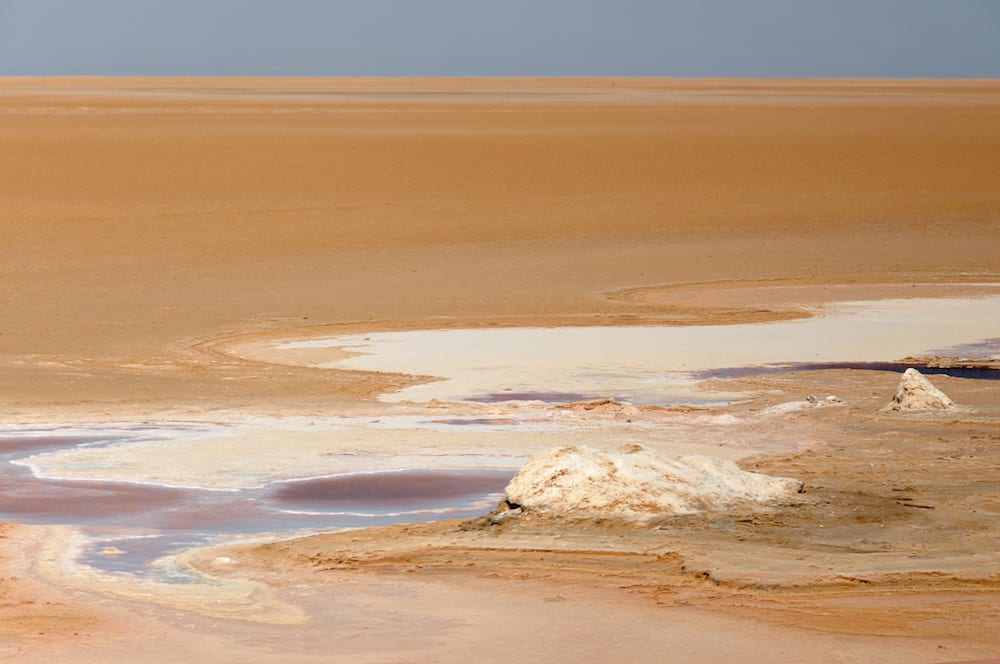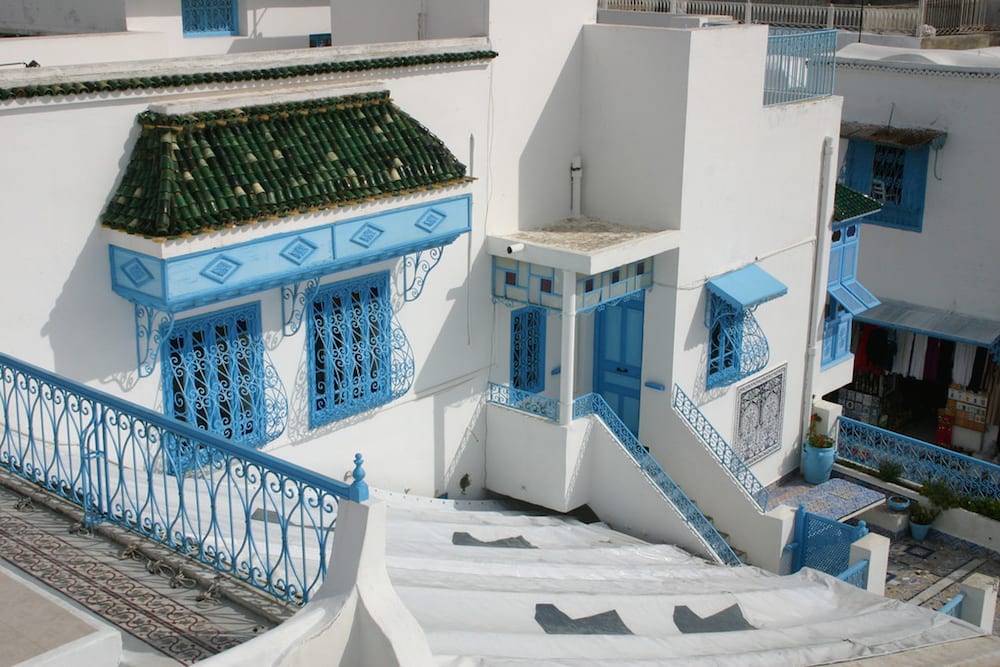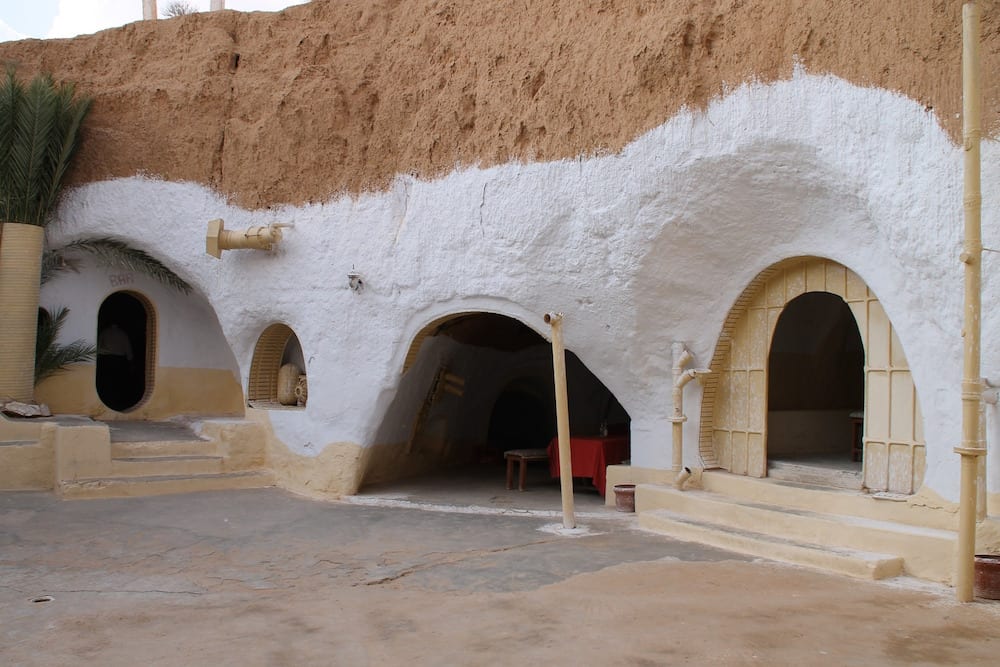Share this!
Travel to Tunisia: The Land of Star Wars
Tunisia is a small wedge of land in northern Africa facing the Mediterranean Sea to the north and east, and bordered by Algeria to the west and southwest and Libya to the southeast. The eastern terminus of the Atlas Mountains intrudes into the northwest while the ochre sands of the Sahara bleed into southern Tunisia.
The country has mostly flown under the tourist radar, a boon to travelers who wish to enjoy the country in peace but a disappointment to those who wish to conduct business.
Where Tunisia fails to disappoint is in its diversity of landscapes, cultural heritage and millennia-old history. You’ll be amazed at what you will find with a little digging; in some places, quite literally. There’s so much to take for a country so small that it’s best enjoyed in bite-sized pieces.
A Desert Planet in a Galaxy Far, Far Away
And you can start with the Sahara. Not in its entirety, but only its northern fringes that make up 40% of Tunisia. The desert’s reddish sands, crusty salt lakes, desolate canyons, bizarre rock formations, sweeping expanses and strange dwellings adapted to the arid climate all give this part of Tunisia an otherworldly appeal.
It’s little wonder then that Tunisia has been used many times over as backdrop for several sci-fi films, most notably the Star Wars franchise. Tatooine, the fictional home planet of Luke Skywalker, is inspired by the actual city of Tataouine whose Ksar Ouled Soltane (fortified granary) gained fame as the slave quarters where Anakin Skywalker lived.
Sidi Bouhlel, a rusty-colored stony ravine, earned the nickname ‘Star Wars Canyon’ for its many appearances in the original 1977 film. Close by is Ong Jemel, the ‘Camel’s neck’ near the oasis town of Tozeur, stood in as the spaceport settlement Mos Espa.
That igloo resembling the Lars Homestead Exterior sits abandoned amidst the endless stretch of Chott el Jerid, a salt lake intriguing for its unusual mineral composition that turns its waters into surreal blue, green or pink. Less than 100 miles from this trippy salt lake is Matmata where you may find traditional Berber underground cave houses featured in the Attack of the Clones. These ‘crater dwellings’ line a huge circular pit dug vertically so locals live in cool contentment by day and warm comfort at night.
Blast from the Roman Past
Desert Tunisia gets its fair share of fame in recent history while Mediterranean Tunisia figured prominently in pre-Roman history: Tunisia was once home of a trading power whose increasing wealth and maritime dominance threatened Rome.
Carthage today is a prosperous suburb of Tunis, the capital city, but in pre-Roman times, it was a trading outpost of the mighty Phoenician empire that eventually gained independence and became a major commercial power whose success in the western Mediterranean made Rome uneasy. Unfortunately, at the end of the Punic Wars, Carthage fell to Rome and was razed to the ground. It was eventually resettled as a province of Roman Africa. Ruins from that era are now enclosed in a UNESCO-protected archaeological site.
It’s one thing to see the remains of an ancient civilization, but it’s another to see an entire Phoenician metropolis preserved against all the odds. And yet that’s what awaits visitors in the coastal town of Kerkouane, another UNESCO World Heritage Site, in northeastern Tunisia. Because the ancient city’s residents fled and never returned, the Romans found there was no one to rule and left Kerkouane untouched, making it possible for modern archaeologists to divine how the city functioned in its heyday.
Another UNESCO feather in Tunisia’s cap is the 3rd century amphitheater of El Jem, the largest Roman colosseum in North Africa that could have easily contained up to 35,000 spectators during its time. The colosseum is well-preserved and generally crowd-free.
Where the French and Arabs Collide
Tunisia was a French protectorate until 1956, so if you wish to experience a piece of Paris, the ‘new city’ of the capital city is the place to be. This newer section of the city sports an orderly European grid, with patisseries and cafes bordering the boulevards and palms linings its main avenue.
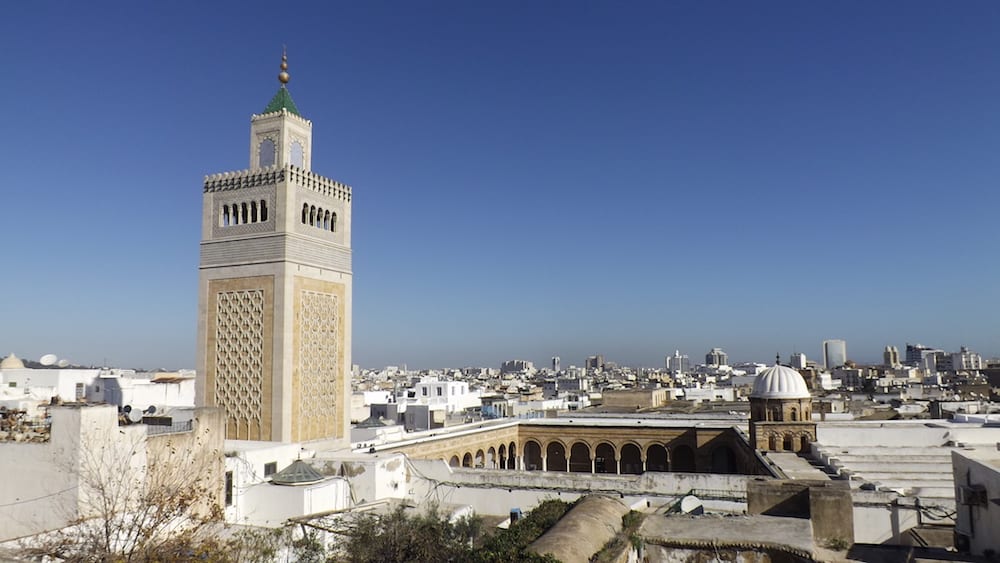
But Tunis is also a Maghrebi and Mediterranean concoction. A thousand years before the French arrived, the Arabs built their medina in what is now the city’s historic district, also a UNESCO World Heritage Site. The medina contains a staggering 700 structures. But even in the twisted and tangled maze of narrow streets, remember that all roads lead to the Zitouna Mosque.
Continuing on this vein of UNESCO protected sites, Kairouan is another Islam stronghold founded in the 7th century. During its height, it was the endpoint of the lucrative trans-Sahara trade routes. Its Great Mosque was the first Muslim place of prayer in North Africa, serving not only as a monument to Islam but also as an example of a universal architectural masterpiece. Kairouan to this day remains a place of pilgrimage for Muslims after Mecca, Medina and Jerusalem.
If You Can’t Make it to Santorini
Because of Tunisia’s association with the Sahara, few realize that it has more than 800 miles of Mediterranean coast. The blue and white clifftop village of Tunisia’s Sidi Bou Said overlooking the Mediterranean Sea calls to mind the blue and white clifftop village of Greece’s Santorini overlooking the Aegean Sea, and for this reason, Sidi Bou Said is crowded especially with the capital Tunis not 30 minutes away.
Visit in early autumn (Oct-Nov) or spring (Mar-Apr) and enjoy this Mediterranean gem in relative peace. Stroll its labyrinth of narrow, cobbled stone alleyways as you look up the brilliant aqua-marine doors and windows framed dramatically against whitewashed walls.
There’s plenty of contemporary history to be found in Sidi Bou Said’s houses. Some of them date back to 18th century when many wealthy citizens built luxurious homes here. Early in the 20th century, many artists and writers – Matisse, Gide, de Beauvoir – were drawn to this “mother-of-pearl sedative” that still attracts a new breed of bohemians and creatives.
The Land of the Lotus-Eaters?
For water sports enthusiasts, the island of Djerba off the coast of Tunisia beckons with snorkeling, diving, wakeboarding, jetskiing, kitesurfing, and motorboating, adventures that may make you not want to leave anymore. Legend has it that Djerba may be the island of the Lotus-Eaters who fed Ulysses and his seafaring warriors lotus fruits and flowers that the visitors forgot all thoughts of returning home. Whether that is true is up for debate. What is for certain is that this charming island was the real-life location of the spaceport town of Mos Eisley in the 1977 Star Wars film. If you don’t believe it, ask Obi-Wan Kenobi.
[amazon_link asins=’B00VF06OBS,B019EG1TC8,B00VF0M7QE,B00E9PMMX0,B01N7FYJ7H,B00E9PMML2,B00VF18WWG,B00VF19KTA’ template=’ProductCarousel’ store=’dawebsite2017-20′ marketplace=’US’ link_id=’5e2b969b-cbc5-11e7-8619-39ed35fc6585′]




